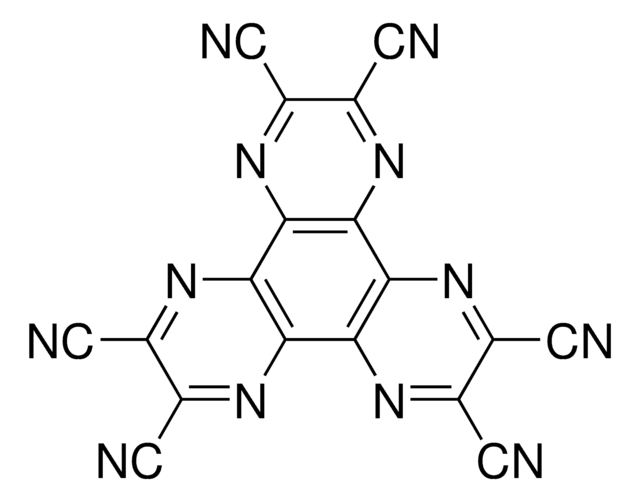792527
Imidazole
anhydrous, free-flowing, Redi-Dri™, ACS reagent, ≥99%
Synonym(s):
1,3-Diaza-2,4-cyclopentadiene, Glyoxaline
About This Item
Recommended Products
grade
ACS reagent
anhydrous
Quality Level
vapor pressure
<1 mmHg ( 20 °C)
product line
Redi-Dri™
Assay
≥99%
form
solid
quality
free-flowing
impurities
≤0.2% water
ign. residue
≤0.1%
pH
9.5-11.0 (25 °C, 5% in H2O)
pKa (25 °C)
6.95
bp
256 °C (lit.)
mp
88-91 °C (lit.)
cation traces
Fe: ≤0.001%
SMILES string
c1c[nH]cn1
InChI
1S/C3H4N2/c1-2-5-3-4-1/h1-3H,(H,4,5)
InChI key
RAXXELZNTBOGNW-UHFFFAOYSA-N
Looking for similar products? Visit Product Comparison Guide
Related Categories
Application
Imidazole can be used as a catalyst in the following
- Silylation of alcohols, carboxylic acids, and amines in the presence of silyl chloride in DMF.
- To prepare acid chlorides from the corresponding carboxylic acids and phosgene.
- Imidazole-PPh3/I2 catalytic system used in the conversion of alcohols into iodides.
- Imidazole-PPh3/I2 is used in the diol deoxygenation reaction.
Legal Information
Signal Word
Danger
Hazard Statements
Precautionary Statements
Hazard Classifications
Acute Tox. 4 Oral - Eye Dam. 1 - Repr. 1B - Skin Corr. 1C
Storage Class Code
6.1C - Combustible, acute toxic Cat.3 / toxic compounds or compounds which causing chronic effects
WGK
WGK 2
Flash Point(F)
293.0 °F - closed cup
Flash Point(C)
145 °C - closed cup
Regulatory Listings
Regulatory Listings are mainly provided for chemical products. Only limited information can be provided here for non-chemical products. No entry means none of the components are listed. It is the user’s obligation to ensure the safe and legal use of the product.
EU REACH Annex XVII (Restriction List)
Choose from one of the most recent versions:
Already Own This Product?
Find documentation for the products that you have recently purchased in the Document Library.
Our team of scientists has experience in all areas of research including Life Science, Material Science, Chemical Synthesis, Chromatography, Analytical and many others.
Contact Technical Service




